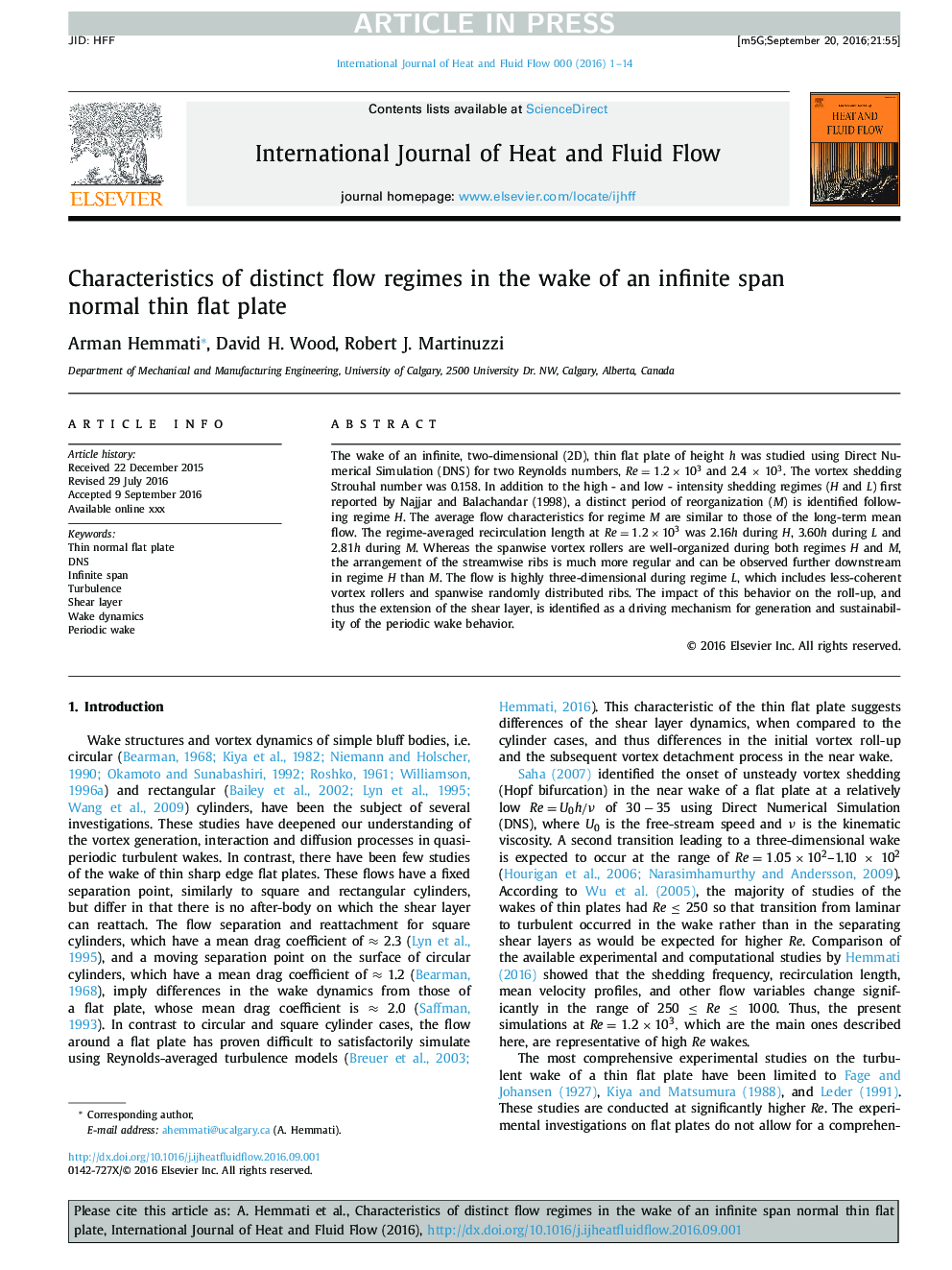| Article ID | Journal | Published Year | Pages | File Type |
|---|---|---|---|---|
| 4993245 | International Journal of Heat and Fluid Flow | 2016 | 14 Pages |
Abstract
The wake of an infinite, two-dimensional (2D), thin flat plate of height h was studied using Direct Numerical Simulation (DNS) for two Reynolds numbers, Re=1.2Ã103 and 2.4 à 103. The vortex shedding Strouhal number was 0.158. In addition to the high - and low - intensity shedding regimes (H and L) first reported by Najjar and Balachandar (1998), a distinct period of reorganization (M) is identified following regime H. The average flow characteristics for regime M are similar to those of the long-term mean flow. The regime-averaged recirculation length at Re=1.2Ã103 was 2.16h during H, 3.60h during L and 2.81h during M. Whereas the spanwise vortex rollers are well-organized during both regimes H and M, the arrangement of the streamwise ribs is much more regular and can be observed further downstream in regime H than M. The flow is highly three-dimensional during regime L, which includes less-coherent vortex rollers and spanwise randomly distributed ribs. The impact of this behavior on the roll-up, and thus the extension of the shear layer, is identified as a driving mechanism for generation and sustainability of the periodic wake behavior.
Related Topics
Physical Sciences and Engineering
Chemical Engineering
Fluid Flow and Transfer Processes
Authors
Arman Hemmati, David H. Wood, Robert J. Martinuzzi,
